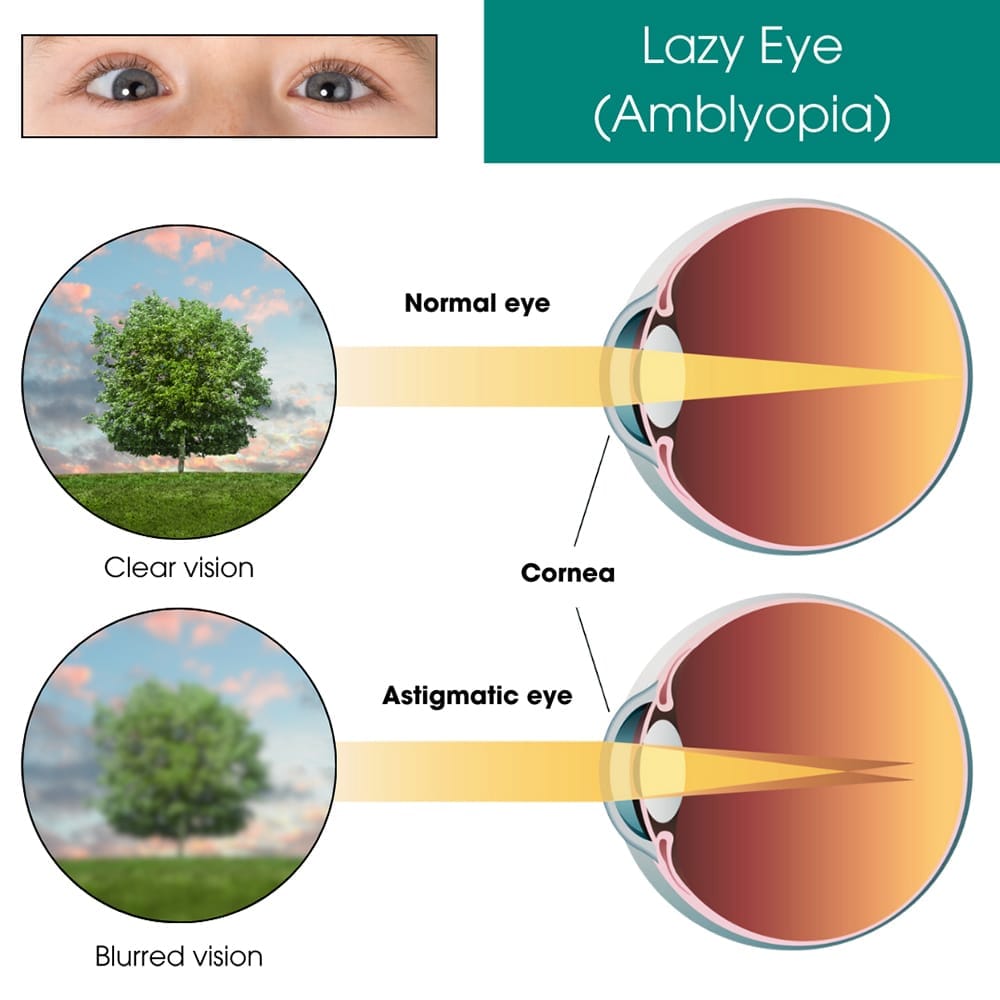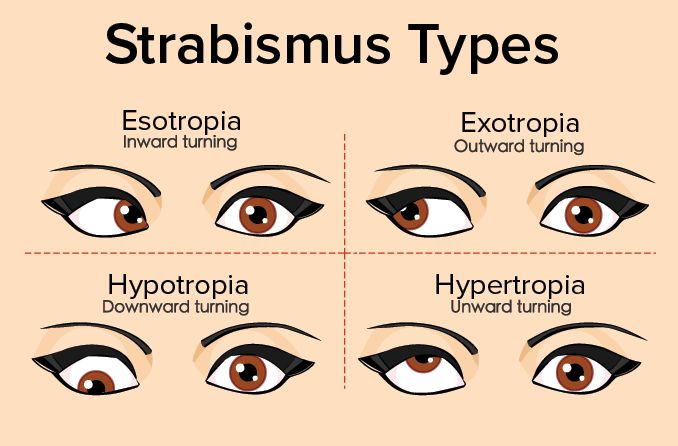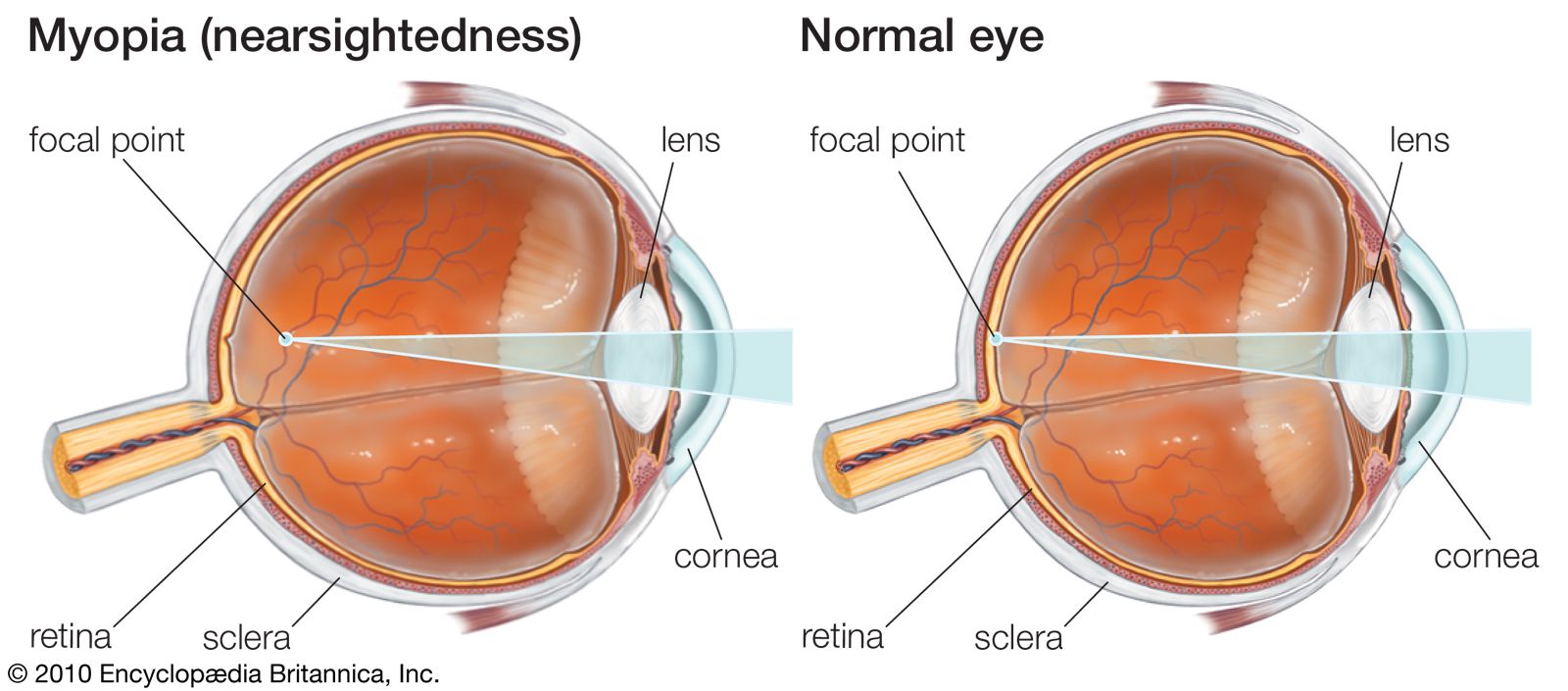Common pediatric vision conditions
Amblyopia (“lazy eye”)
Reduced vision in one eye from early mismatch in focusing or alignment. Early detection improves outcomes with glasses, patching, or other therapies.
Strabismus (eye turn)
Eyes that don’t align perfectly can affect depth perception and comfort. Treatment may include glasses, prism, vision therapy, or referral when needed.


Myopia (nearsightedness)
Progressive nearsightedness often appears in school-age years. Options like specialty soft lenses (e.g., MiSight®), ortho-k, or lifestyle guidance may help slow progression.
Focusing & tracking issues
Inefficient focusing or tracking can cause fatigue and reading struggles. We assess how the eyes work together and outline age-appropriate solutions.
